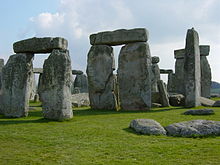|
|
General: ARCO DEL TRIUNFO DE PARIS, DISEÑADO EN FUNCION A LA ESTRELLA SIRIO
Elegir otro panel de mensajes |
|
|
That's right: Sirius rises at 26 degrees south of east, or bearing 116 degrees, from the latitude of Paris, and this is the direction in which the Champs Elysées is aligned. The Champs Elysées. The name is French for "Elysian Fields": The Champs Elysées. The name is French for "Elysian Fields":
Quote:
| Elysium or the Elysian Fields (Ancient Greek: Ἠλύσιον πεδίον, Ēlýsion pedíon) is a conception of the afterlife that evolved over time and was maintained by certain Greek religious and philosophical sects, and cults. Initially separate from the realm of Hades, admission was initially reserved for mortals related to the gods and other heroes. Later, it expanded to include those chosen by the gods, the righteous, and the heroic, where they would remain after death, to live a blessed and happy life, and indulging in whatever employment they had enjoyed in life. |
Remember how the novel Arch of Triumph 1948 describes the Arc de Triomphe?: as the "huge gate to Hades"Now, the star Sirius, which is the star associated with Isis, rises from Paris every day at 116 degrees, but it does so at a different time each day. On August 31 each year, and on August 31 1997, Sirius rises about 5:30am. That means that if you had stood in the Champs Elysées and sighted along the avenue, before dawn on the morning that Diana died, you would see this sight: or at least, this is a version of what it would look like stitched together out of Google earth and Stellarium. I got a bit more creative: I got a bit more creative:  Then, a few minutes later, the moon rose, though it was almost imperceptible. Nevertheless it was there: so this was the scene in the skies to the east of Paris, literally as the official announcement of the death of Diana was made. Sirius rising through the Arc de Triomphe and along the Champs Elysées, and the moon further to the north, breaking the horizon within minutes. The moon, Diana, and Sirius, Isis, hovering over the city waking up to the news. Then, a few minutes later, the moon rose, though it was almost imperceptible. Nevertheless it was there: so this was the scene in the skies to the east of Paris, literally as the official announcement of the death of Diana was made. Sirius rising through the Arc de Triomphe and along the Champs Elysées, and the moon further to the north, breaking the horizon within minutes. The moon, Diana, and Sirius, Isis, hovering over the city waking up to the news. So how is Diana equal to Isis, or Sirius?Diana was born with the sun conjunct Sirius. Her astrology chart for those of you who are happy with that kind of thing, is here. Her natal sun is at 9 degrees 40 minutes of Cancer, and Sirius is at 13 degrees 32 minutes of Cancer, which is within the orb of a conjunction.So Diana's sun at birth is conjunct Sirius! Now this is true for any one who is born on July 1, or a day or two either side. Like Charles Laughton. Anyone with a July 1 birthday is a fitting archetype, potentially, for Isis, as their sun, or individuality, aligns with that of Isis. Diana certainly steps into her archetypes, no question of that, as the images above show, and plenty more to come on that.There are enough clues on the table now to be able to bring some ideas into focus.Elysian Fields. Gate to Hades. Arc de Triomphe sited on the "star", symbol of Isis. Champs Elysées aligned to the rising of Sirius=Isis. Paris as ancient temple of Isis. Isis who came to Paris on a boat. Diana, who came to Paris on a boat, whose name was changed to Osiris. The moon at it's lowest ebb, at it's darkest, at it's nadir. Death, as the moon is extinguished. And then rebirth, as Sirius rises above the horizon, reborn, through the gates, the portals, of the Arch of Triumph. This is a ritual, a theatrical presentation, a play that runs without a script yet everything, somehow, happens right on cue. Down to the minute. Yet it seems to resonate across the centuries, even the millennia... So how is Diana equal to Isis, or Sirius?Diana was born with the sun conjunct Sirius. Her astrology chart for those of you who are happy with that kind of thing, is here. Her natal sun is at 9 degrees 40 minutes of Cancer, and Sirius is at 13 degrees 32 minutes of Cancer, which is within the orb of a conjunction.So Diana's sun at birth is conjunct Sirius! Now this is true for any one who is born on July 1, or a day or two either side. Like Charles Laughton. Anyone with a July 1 birthday is a fitting archetype, potentially, for Isis, as their sun, or individuality, aligns with that of Isis. Diana certainly steps into her archetypes, no question of that, as the images above show, and plenty more to come on that.There are enough clues on the table now to be able to bring some ideas into focus.Elysian Fields. Gate to Hades. Arc de Triomphe sited on the "star", symbol of Isis. Champs Elysées aligned to the rising of Sirius=Isis. Paris as ancient temple of Isis. Isis who came to Paris on a boat. Diana, who came to Paris on a boat, whose name was changed to Osiris. The moon at it's lowest ebb, at it's darkest, at it's nadir. Death, as the moon is extinguished. And then rebirth, as Sirius rises above the horizon, reborn, through the gates, the portals, of the Arch of Triumph. This is a ritual, a theatrical presentation, a play that runs without a script yet everything, somehow, happens right on cue. Down to the minute. Yet it seems to resonate across the centuries, even the millennia...
|
|
|
|
|
|
Our 26th President Teddy Roosevelt was a Freemason.
He is Honored with a Memorial in Washington D.C. on an Island in the Potomac River. The Island was once called "MY LORDS ISLAND" and was known as "MASON ISLAND".
An interesting alignment occurs when a map of Washington DC is viewed looking to the EAST...
Place two diagrams of the Great Pyramid (with slopes of 51.51) on the map of DC with their corners touching and resting on the Roosevelt Memorial on "MASON ISLAND" ---
|
|
|
|
|
New Year's Prophecy - Part 2
Game of Thrones at the End of Time
By Goro Adachi
January 3, 2017
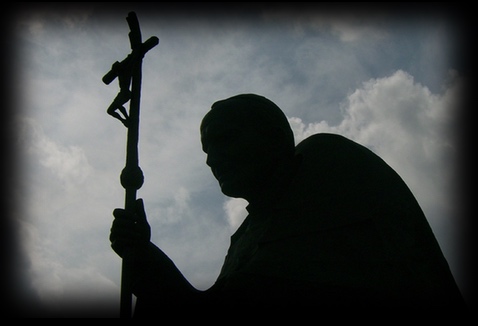
A big shift is coming, it seems. Our pattern projection was quickly followed by a pattern fulfillment, spawning glimpses of the future in the process as anticipated by " New Year's Prophecy". What's coming, as far as we can tell, is a dramatic tectonic shift in time... 
This New Year's Eve/Day Impact in the form of an Istanbul nightclub terror attack by ISIS came with all the hallmarks identified in New Year's Prophecy (Part 1, posted Dec 30), i.e. Sirius, Rio time code, etc... with ominous implications for the new year: 
- Sirius = New Year's star (culmination at ~midnight/start of Jan 1)
- Istanbul nightclub terror attack on New Year's Eve/Day (1 hr 15 min after midnight local time)
- Sirius = Isis (per ancient Egyptian tradition)
- Istanbul nightclub attack by ISIS
- Isis = "Queen of Heaven" (per tradition)
- Istanbul nightclub named "Reina" meaning "Queen"
- Rio = "New year's city" via ~Jan 1 solar alignment (lat/dec); same alignment also on ~Dec 10 (plus temporal context of 2016 = year of Rio Olympics)
- Jan 1, 2017: Istanbul terror attack (nightclub)
- Dec 10, 2016: Istanbul terror attack (soccer stadium)
It is the geographical focus on Istanbul in particular that exhibits the strongest qualities of being the New Year's crystal ball. This has to do with the papal/Church/Christianity theme highlighted in Part 1... Istanbul used to be called Constantinople after Constantine the Great (AD 272-337) who founded the capital city of the Roman Empire. Constantine played a pivotal role in making Christianity the powerful, dominant religion that it is today. " Constantinian Shift", as it is sometimes called, ensured not only the survival but also the dominance of Christianity over pagan religions including ancient Egyptian cults.

By becoming the first Christian Roman emperor, Constantine initiated the marriage between the Roman Empire and Christianity, in effect creating a "Christian Empire". In 313 he and Licinius decriminalized Christianity with the Edict of Milan; in 325 he convened the first Council of Nicaea to establish the first uniform Christian doctrine/orthodoxy ("Nicene Creed"), officially declaring what Christianity is/should be; in 380 under Roman Emperor Theodosius I Christianity officially became the state religion of the Roman Empire; in 391, Theodosius I issued a decree outlawing ancient cults; in the early 400s the ancient Egyptian temple on the Philae island was the last to be converted into a church. Christianity engulfed the ancient Egyptian magical "religion". Isis was one of the most prominent deities in the ancient Egyptian "religion", making it highly meaningful that we saw Istanbul/ Constantinople juxtaposed with ISIS in the New Year's terror attack. Add to it our Rio de Janeiro " Janus" context, i.e. the god of the beginning and ending, we definitely get this theme of the end of the Egyptian religion and the beginning of the Roman Christianity, geographically and historically interfacing at Istanbul/Constantinople. Also pertinent to this is the back-to-back, daughter-mother double death event/signal that we were sad to see right after Christmas (the biggest Christian holiday)...
Carrie Fisher's last name has a very Christian connotation:
The phrase "fishers of men," also at Mark 1:17, is one of the most well known lines in the entire New Testament, and the most important metaphor for evangelism. The image probably had an important role in the adoption of the Ichthys as a symbol of early Christianity. The reference has also often been moved from the disciples to Jesus, with him being called the "fisher of men," and the image of Jesus as a fisherman is second only to that of Jesus as a shepherd.
Fisher was also Princess Leia in Star Wars which makes her mother Debbie Reynolds analogous to a " queen", ominously resonating with the nightclub Reina - meaning " Queen" - attacked in Istanbul attacked on New Year's Day. On Christmas Day itself was another major death of an icon - George Michael. One of his well known songs was Last Christmas...
...and his most successful album - winning the Grammy Awards for Album of the Year in 1989 - was called Faith (1987). So we continue to see this combination of Christianity and " ending" ("last") together, evoking the 2012 poster ( Rio Jesus statue) we highlighted previously.
Put it all together, the overall message could potentially be (though not exclusively so) something to the effect of " the end of the Age of the Church/Christianity/Roman Empire or Age of Pisces", and perhaps concurrently the resurrection of the ancient Egyptian/Gnostic/Hermetic tradition/philosophy which was forced to go underground by the combined forces of the Church and the Roman Empire. Remember, the key idea behind "New Year's Prophecy" was that we would have a significant event(s) around New Year's Eve/Day, likely related to Sirius, the papacy, as well as the Russia-US cyberwar situation. That it would be a major foreshadowing of what's to come in 2017 and potentially beyond. We are now indeed getting glimpses of the potential future assuming we are on the right track, which we should be based on the accuracy level of our projection so far. Even the Russian cyberwar pattern manifested vividly on New Year's Eve in the form of big news headlines claiming Russian cyber hacking of Vermont's electric utility: 
It's tempting to try to combine the potentially prophetic themes we have going...
- Papacy/Church (ending?)
- Queen ISIS
- Russia-US relations, cyber warfare
For example, we can imagine a scenario in which ISIS assassinates the Pope, or one that has Queen Elizabeth II dying or stepping down like Pope Benedict XVI did back in 2013. As for Russia, the new Cold War-like situation may be something unfolding in the "background" throughout the near. But the most intriguing and central in the whole pattern is the "end of the papacy/Church/Christianity" storyline. Ominously it goes well with curiously accurate St. Malachy's papal prophecy...
The Prophecy of the Popes is a series of 112 short, cryptic phrases in Latin which purport to predict the Roman Catholic popes (along with a few antipopes), beginning with Pope Celestine II. The alleged prophecies were first published by Benedictine monk Arnold Wion in 1595. Wion attributes the prophecies to Saint Malachy, a 12th-century Archbishop of Armagh, Ireland.
According to the prophecy, Pope Francis would correspond to the final pope on the list called " Peter the Roman". (This correspondence is not certain as there is some ambiguity at the end of the pope list, but Francis would definitely be one the final popes.)
Pope Benedict XVI was #111 on the list with the motto "Glory of the Olive". It is then followed by a set of sentences - not just a short motto, but two paragraphs - describing the next/final pope or the next two (or more) final popes...
In persecutione extrema S.R.E. sedebit.
Petrus Romanus, qui pascet oves in multis tribulationibus,
quibus transactis civitas septicollis diruetur,
& judex tremedus judicabit populum suum. Finis.
In the extreme persecution of the Holy Roman Church,
there will sit.
Peter the Roman, who will pasture his sheep in many tribulations,
and when these things are finished, the city of seven hills [i.e. Rome] will be destroyed, and the terrible judge will judge his people.
The End.
They clearly describe the end of the Roman Catholic Church, the end of Rome. And it sounds as if this great destruction would come after the reign of "Peter the Roman". That would mean after Pope Francis. If we are in fact getting a multicontextual foreshadowing of 2017 signaling a situation very similar to St. Malachy's "Peter the Roman" prophecy, that would imply the exit of Pope Francis within a year or so, followed by the Fall of the Church and with it the Age of Pisces (Fish). Of course, the big question is, is Pope Francis really Peter the Roman? No way to be sure obviously. But there are intriguing hints. Remember the "sign in the sky" at the time of Pope Benedict's resignation (2013) which also produced a geo-alignment pinpointing Rio (discussed in Part 1)?
Feb 11, 2013: Pope Benedict XVI announces resignation
Feb 15, 2013: Major meteor impact in Chelyabinsk, Russia 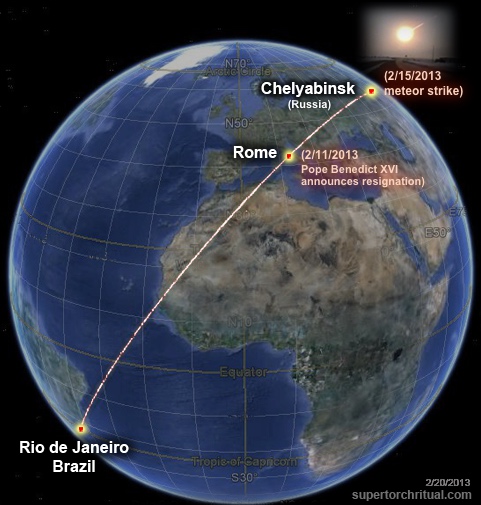
Note that " Peter" means " rock". Meteors are "rocks fallen from heaven". So the mid-February 2013 double impact event in effect telegraphed "(space) rock Rome" or " Peter the Roman"! And out of this "Peter the Roman" event came Pope Francis, introduced to the world on March 13, 2013.

As discussed in Part 1 the very first foreign land he officially visited as the pope was... Rio de Janeiro.
It gets even more interesting. Pope Francis's arrival in Rio on January 22, 2013 precisely coincided with the birth of Prince William and Kate's royal baby Prince George. who is Queen Elizabeth II's great grand child.
Remember, the New Year's terror attack in Istanbul/ Constantinople - the "birthplace" of the Roman Catholic Church - involved a nightclub called " Queen" ( Reina). A fascinating Pope-Queen entanglement. Or... a " father-mother" entanglement. After the exit of Queen Elizabeth II, the line of succession will be:
- Prince Charles
- Prince William
- Prince George (William's baby)
It just so happens that Pope Francis's real name is also "George". (Full name: Jorge Mario Bergoglio.) And George Michael just died on Christmas, the biggest Christian holiday mere days before New Year's Day.
Perhaps there is something special about Prince George? I talked extensively about the "Grail bloodline" symbolism surrounding the British royal family, particularly on the Diana side and Prince William, in my 2011 article "Lucifer's Destiny".

Perhaps this year (2017) the Pope and/or the Queen will die/exit which will trigger a chain reaction that leads to:
- the FALL of the Roman Catholic Church
- the RISE of the "Holy Grail" via British Royal Family after QE2
This duality would make a lot of multicontextual sense since the Holy Grail tradition has a lot - if not is all about - the Gnostic/Hermetic/Egyptian underground stream, the "religion" or philosophy (as well as bloodlines in some capacity) embodied in the figure of Isis, suppressed by the Roman Christianity which came into power via Constantin the Great. I'm not saying the bloodline of Princess Diana (Prince William, Prince George, etc.) has to be literally of the Holy Grail a la "The Da Vince Code", but even just a symbolic rise of "King Arthur" in this manner would be... well, symbolic of "Isis rising".
Isis is Sirius, and Sirius is "The Star", which is tarot card #17 as in 2017.
Perhaps it's no coincidence that the origin of the tarot could be traced back to underground stream tradition. We noted in Part 1 the cover of The Economist predicting 2017 world events displays the tarot, and the biggest political/geopolitical event coming in 2017 is a figure named "Trump" as in trump/tarot cards.
Plus, let's not forget that the musician Prince died on Queen Elizabeth II's birthday (April 21) last year.
It connects back to Rio as the Olympics there started on the day of a Regulus-Venus conjunction. Regulus, the heart of lion (Leo), is traditionally known as "prince" (or "little king").
The Rio Olympics ended on August 21 when Regulus was in conjunction with the Sun...
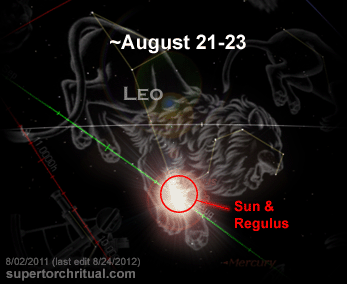
...coinciding with a deadly earthquake in central Italy near Rome where the Pope resides.
 Aug 23/24, 2016 Deadly earthquake rattles central Italy Aug 23/24, 2016 Deadly earthquake rattles central Italy
Aug 25 Italy quake death toll passes 240
These things are heavily interconnected. When there is this level of inter-contextual coherence, that's when you know there is a big hurricane forming and at some point it will strike. And when it does, it helps if we are prepared and mentally ready. (In some cases, we may even be able to prevent it.) Going multicontextual, as done in this New Year's Prophecy series, can be very valuable in this sense, helping us acquire a perspective unstuck in linear time. The torch is being passed from the Old World to the New World, a new age to rise out of the ashes of the old age like the phoenix. Mars is coming. An ending is always a new beginning, always together, like New Year's Eve and New Year's Day. Now face-to-face with this "Janus moment" in history, we can't help but be reminded of the old Chinese curse: "May you live in interesting times"...
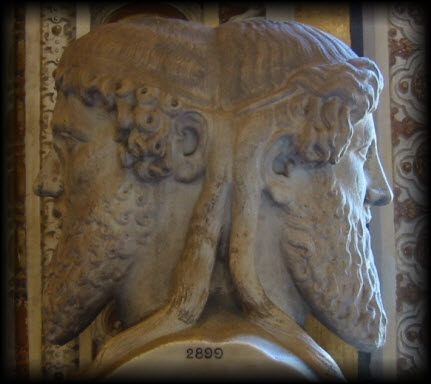
[P.S. There's much more going on right now than the issues discussed in this article. For example, I didn't even touch on the earth changes stuff that will... Well, like I said we're at a tipping point, the point of no return. Already being discussed on STRUG, if you're interested.]
https://www.goroadachi.com/etemenanki/newyears-prophecy-part2.html |
|
|
|
|
New Year's Prophecy
Intertemporal Perspective via 2016 Tower & Star Rituals
By Goro Adachi
December 30, 2016

Century II - 41
The great star will burn for seven days,
The cloud will make two suns appear:
The large mastiff will howl all night
When the great pontiff changed territory.
- Nostradamus
Not all New Year's Days are created equal and this one coming up happens to be a special one. The previous one was special as well, both being attached to the year 2016, the point of no return. And if the pattern holds, we are in for a whole new set of inter-temporal "clues" which, if decoded properly, should be quite prophetic in nature. Decoding these things happens to be my specialty, or obsession...
It's telling that The Economist's annual, end of the year crystal ball edition features a cover with tarot cards. Obviously they were inspired by the irresistible combination of "Trump" (cards) and the idea of divination (predicting the future). Not too surprising there. (What is surprising though is how most people trying to "decode" it can't even crack the first step: The only two tilted cards, "Judgment" and "The Star", are card #20 and card #17 per tradition, spelling out "20-17" or "2017".)
The Economist is actually a bit late to the party as there was a whole lot of foreshadowing going on last year through the tarot symbolism on New Year's Eve/Day (2015/2016). It came in the form of Dubai's tower inferno evoking the Tower card numbered 16 (as in 20 16)...
...in effect foreshadowing the earthshaking rise of "Trump" who famously lives in Trump Tower (= Tower trump card).
Extending the pattern forward in time would have the new year 2017 correspond to tarot card #17 - " The Star".

It would most certainly be Sirius on New Year's Eve/Day as a magical celestial moment arrives every year when the brightest star in the night sky "culminates" due south reaching its highest point right around midnight on New Year's Eve/Day.
But as I said, it's extra special around 2016. I'm quite aware of this, and it seems so was Nostradamus. Let me introduce you to quatrain II-41, or as I like to call it the "Sirius quatrain":
Century II - 41
La grand' estoille par sept jours bruslera,
Nuee fera deux soleils apparoir:
Le gros mastin toute nuit hurlera,
Quand grand pontife changera de terroir.
The great star will burn for seven days,
The cloud will make two suns appear:
The large mastiff will howl all night
When the great pontiff changed territory.
- Nostradamus
Right now it is highly relevant and timely as shown below:
Line 1: The great star will burn for seven days
Being the brightest star in the night sky, Sirius certainly qualifies as a "great star". It "burns" in the sense that the name "Sirius" means "scorcher" plus the phrase "Dog Days of summer" derives from Sirius's nickname "Dog Star". Even the "seven days" (sept jours) part relates to Sirius in that ancient Egyptians called the star Spd, Spdt, or Sept, resonating with the French sept meaning "seven. ("Seven days" can also allude to the 7-day festival Saturnalia, Dec 17-23.)
Line 2: The cloud will make two suns appear
In esoteric tradition Sirius has been considered the "second sun".
Line 3: The large mastiff will howl all night
Sirius is the "Dog Star" ("mastiff") and it "howls all night" on New Year's Eve/Day by being visible all night long. (Culminating around midnight implies being visible from dusk to dawn.)
Line 4: When the great pontiff changed territory
The last time there was a change in the papacy was back in 2013 when Pope Benedict XVI stepped down and Pope Francis took over. Unbeknownst to most, it managed to multicontextually encode an arrow pointing ahead to the year 2016:
- Pope Benedict XVI is "16" (XVI), numerically resonating with 2016 and the Tower card (XVI)
 
- Pope Francis's first foreign trip ("changing territory") as head of the Catholic Church was to Rio de Janeiro, Brazil in July 2013, where the Summer Olympics would take place in 2016
In the context of the "Sirius quatrain" II-41, it makes a lot of sense for Rio to be highlighted in this manner. It has to do with the real, hidden reason behind the name "Rio de Janeiro" or " River of January" which I'm revealing here for the first time anywhere (aside from STRUG/members section which is always ahead)... Firstly, the term " January" (Janeiro) derives from Janus the god of beginnings, endings, time, and doorways. Basically a perfect set of descriptions for New Year's Eve/Day (= beginning of January).

And it just so happens it's right around New Year's Day, when Sirius "howls all night", that Rio and the Sun are aligned in terms of latitude & declination. In other words, the Sun is directly overhead at noon in Rio right around New Year's Day. Rio in this way indeed is a "city of Janus/January"!

As above, so below... Sirius is the " New Year's star" above, Rio de Janeiro is the " New Year's city" below. Having established this and 2016 being the year of the Rio Olympics, we can then quite easily infer that the beginning and ending of 2016 are of special, "ritualistic" significance. We already saw this in action at the beginning of 2016 (Dubai tower fire), and we are now about to witness something at the end of 2016. The straightforward expectation would be that it would reflect " The Star" card - #17 representing "2017" - just as the Dubai tower inferno was a simulation of the "Tower" tarot card, #16. This would mean it would likely involve Sirius on New Year's Eve/Day. (I may actually already know the ritual taking place, but I'll save it for another article, perhaps early next year.) There is another approach here to discerning the nature of the end of 2016 "ritual(s)". It has to do with the fact that Rio and the Sun are also aligned on ~December 10th (equidistant from the solstice).
That "preview" window precisely coincided with a major geopolitical flareup stemming from the apparent Russian cyber attacks against the US during the 2016 presidential election.
 It's an ongoing situation, happening in real time as I write this and it wouldn't be surprising if we hear more about the US retaliation against Russia around the New Year's Eve/Day weekend, such as actual US cyber attacks against Russia.
(I've consistently pointed to the significance of the Russian cyberwar situation since the very beginning. See: Jul 26 tweet, Jul 27 tweet, Jul 30 tweet, Aug 30 update. Here we are, it's like the Cold War has returned.) Saturnalia (Dec 17-23) was another important window we were watching very closely... (Saturnalia starts on Pope Francis's birthday, by the way.) My tweet from Nov 24:
And it was intense indeed...
Notable as it connects right back to the 2015-2016 New Year's Eve/Day "ritual". The name "Dubai" means "market". And the fire there took place right next to the Dubai's spectacular New Year's fireworks.
Makes us wonder if these constitute an omen foreshadowing a major market/financial event coming in the New Year.

I'm going to end this article here, but really we've just scratched the surface. Just the tip of the iceberg for what's unfolding... because 2016 was a tipping point, the point of no return. We didn't even touch on the earth changes and the sixth mass extinction already being discussed on STRUG...
https://www.goroadachi.com/etemenanki/newyears-prophecy.html |
|
|
|
|
A character in the scriptures that would best fit the description is Mary Magdalene - an enigmatic female companion, or quite likely the lover/wife, of Jesus Christ. Although Mary Magdalene is never described as a prostitute in the New Testament, it has been the prevalent view that she was. Chances are, though, the Magdalene is to be considered a 'whore' only in the symbolic sense that she was a version of the ancient Egyptian goddess par excellence, Isis, the wife-sister of Osiris, who was both a 'virgin' and a 'whore' as well as a goddess of wisdom and magic. (Isis' companion Osiris was killed and later resurrected to nicely parallel the Magdalene's companion, Jesus.) Isis, in turn, was represented in the sky by the great star Sirius -- a star of utmost importance to the ancient Egyptians as its 'rebirth' (i.e. 'heliacal rising') in mid-summer had the function of marking the New Year and signaling the beginning of the life-giving annual flooding of the Nile, roughly coinciding with the summer solstice. |
|
|
|
|
Aprenda sobre el extraño ciclo de tránsito de Venus.

Venus siguió estas trayectorias a través del Sol en 2004 y 2012. La Tierra no vio un tránsito en 1996 y no verá otro en 2020.
Ciencia y tecnología : Gregg Dinderman
Quienes conocen los ritmos del cielo nocturno saben que ciertos ciclos astronómicos se repiten una y otra vez. Estos incluyen el ciclo estacional anual de la Tierra en su órbita alrededor del Sol, el ciclo de 29 días y medio de las fases lunares y el hecho de que Marte entra en oposición cada 26 meses. Incluso los eclipses solares y lunares se producen en ciclos de saros.
Pero comparado con estos otros ciclos, el ciclo actual de tránsitos de Venus es extraño. ¡ De verdad, extraño! Este artículo explica por qué los tránsitos de Venus son tan raros que el que se producirá el 5 y 6 de junio será el último que verás, por qué el ciclo tiene un patrón tan peculiar y por qué el ciclo actual no durará para siempre. (El tránsito ocurre el 5 de junio en el hemisferio occidental y el 6 de junio en el hemisferio oriental).
Cómo obtener un tránsito de Venus
Para que se produzca un tránsito de Venus, deben ocurrir dos eventos simultáneamente, y es raro tener una sincronía tan perfecta.

Los tránsitos de Venus sólo pueden ocurrir cuando Venus pasa entre el Sol y la Tierra, un punto en su órbita conocido como conjunción inferior.
CALLE
En primer lugar, y lo más obvio, Venus debe moverse directamente entre la Tierra y el Sol para que un observador imaginario que mirase el sistema solar desde arriba vea los tres cuerpos formando una línea perfectamente recta. Cuando esto ocurre, los astrónomos dicen que Venus ha alcanzado una conjunción inferior . Venus orbita el Sol más rápido y en una órbita más pequeña, y alcanza estas conjunciones inferiores cada 584 días terrestres.
Si Venus y la Tierra orbitaran alrededor del Sol en el mismo plano, disfrutaríamos de un tránsito de Venus cada 584 días, y el tránsito del 5 de junio no sería tan importante. Pero en realidad, el plano orbital de Venus está inclinado 3,4 grados con respecto al plano orbital de la Tierra. Los planos se cruzan en dos puntos llamados nodos . Para que se produzca un tránsito, Venus debe estar en conjunción inferior al mismo tiempo que está en un nodo. Esta alineación tridimensional perfecta no ocurre muy a menudo. Normalmente, la órbita inclinada de Venus significa que se encuentra "encima" o "debajo" del Sol cuando se trata de conjunción inferior.

La órbita de Venus alrededor del Sol está inclinada respecto a la órbita de la Tierra (exagerada aquí para mayor claridad). Los tránsitos de Venus solo pueden ocurrir en los dos nodos, donde se intersecan los planos orbitales de Venus y la Tierra.
Ciencia y tecnología : Gregg Dinderman
Uno de estos nodos ocurre a principios de junio y el otro a principios de diciembre, lo que significa que estos son los únicos momentos en que pueden ocurrir tránsitos de Venus. A principios de junio, Venus parece estar descendiendo (o hacia el sur), por lo que los astrónomos lo llaman nodo descendente . A principios de diciembre, Venus se mueve hacia arriba (o hacia el norte) en su órbita, por lo que se trata de un nodo ascendente .
Un ciclo extraño
Hasta ahora, las cosas parecen bastante sencillas y directas. Pero aquí es donde el tránsito del ciclo de Venus empieza a volverse extraño (aunque también bastante interesante).
Durante los últimos siglos y los próximos, estas alineaciones tridimensionales perfectas se producen a intervalos de 8, 105½, 8 y 121½ años. En realidad, considérelo un ciclo de 243 años, con pares de tránsitos separados por tan solo 8 años, pero con cada par separado por más de un siglo.

Se muestran las trayectorias de Venus a través del Sol desde el año 1388 hasta el 2012. La fila superior muestra los tránsitos de diciembre en el nodo ascendente de Venus y la fila inferior muestra los tránsitos de junio en el nodo descendente de Venus.
CALLE
Los tránsitos de nodos ascendentes ocurrieron en diciembre de 1631, 1639, 1874 y 1882. Los siguientes tránsitos ocurrieron en diciembre de 2117 y 2125. Los tránsitos de nodos descendentes ocurrieron en junio de 1761, 1769 y 2004, y el siguiente tuvo lugar el 5 y 6 de junio de 2012. Posteriormente, los tránsitos de nodos descendentes ocurrieron en junio de 2247 y 2255.
En los tránsitos de nodos descendentes con una separación de 8 años, Venus cruza la parte sur del disco solar en el primer tránsito y la parte norte en el segundo. Por eso, Venus cruzará la parte norte del disco solar el 5 o 6 de junio. Cuando Venus llegó a la conjunción inferior en 1996, estaba demasiado por debajo del Sol para transitar su disco. Y en 2020, estará demasiado alto.
Lo contrario ocurre con los tránsitos de nodos ascendentes. El primer tránsito de un par de ocho años cruza la parte norte del Sol, mientras que el segundo cruza la mitad sur.
Entonces, ¿por qué Venus tarda “solo” 105 años y medio en pasar de un par de tránsitos de junio a un par de tránsitos de diciembre, mientras que tarda 121 años y medio en pasar de un par de tránsitos de diciembre a un par de tránsitos de junio? Esta asimetría se debe a que la órbita de la Tierra alrededor del Sol no es exactamente un círculo perfecto. Es ligeramente alargada (el término técnico es excéntrica ), desviándose de un círculo perfecto en aproximadamente un 3 %. En cambio, la órbita de Venus está tan cerca de ser un círculo perfecto que su minúscula elongación puede ignorarse en este análisis.

La órbita alargada (excéntrica) de la Tierra (exagerada en el diagrama) explica por qué hay una asimetría en la cantidad de tiempo entre un par de tránsitos y el siguiente.
CALLE
El diagrama de la derecha (en el que se exagera la excentricidad orbital de la Tierra para mayor claridad) muestra lo que está sucediendo. Básicamente, la Tierra está cerca de su punto más alejado del Sol ( afelio ) en junio y cerca de su punto más cercano al Sol ( perihelio ) en diciembre. Cuando la Tierra está más cerca de la poderosa gravedad del Sol, se mueve ligeramente más rápido en su órbita que cuando está más lejos del Sol. La diferencia en la velocidad orbital de la Tierra desde el perihelio hasta el afelio produce una brecha más larga (121½ años) entre el tiempo que tarda en alinearse entre los tránsitos de diciembre y junio que los 105½ años que tarda en alinearse entre los tránsitos de junio y diciembre.
Nada bueno dura para siempre

En el futuro, los tránsitos de Venus serán aún más raros. Este diagrama muestra la trayectoria que Venus seguirá frente al Sol en 3089. En 3081 y 3097, la trayectoria de Venus no tocará el Sol (desde la perspectiva terrestre).
CALLE
Desafortunadamente para los astrónomos que viven en un futuro lejano, la frecuencia de los tránsitos disminuirá. Tanto las órbitas de Venus como las de la Tierra precesan, lo que significa que giran durante largos períodos de tiempo para producir un patrón similar a una roseta. En otras palabras, el perihelio de la Tierra se desplaza en su órbita, al igual que el de Venus. Debido a la precesión, los astrónomos terrestres solo podrán disfrutar de un tránsito de nodo ascendente durante siglos después del año 3000. Verán un tránsito de nodo descendente en 3089, pero ocho años después, en 3097, Venus alcanzará una conjunción inferior demasiado por encima del Sol como para transitar su disco.
Y a lo largo de decenas de miles de años, el ciclo de 243 años acabará cambiando a medida que la excentricidad de las órbitas de Venus y la Tierra evolucione debido a las perturbaciones gravitacionales de otros planetas. En escalas de tiempo aún mayores, se imponen efectos caóticos, y las matemáticas se vuelven tan inciertas que los astrónomos actuales ya no pueden predecir cuándo ocurrirán estas raras alineaciones celestes ni cómo serán los ciclos futuros.
Pero por ahora, puedes estar seguro de que habrá un tránsito de Venus el 5 o 6 de junio y, a menos que la medicina moderna haga un milagro, esta será la última oportunidad que tendrás de ver un tránsito de Venus desde la superficie de la Tierra.

Al representar gráficamente el número de días de cada año en que ocurre un tránsito de Venus, es fácil observar su comportamiento a largo plazo y la suerte de vivir en un período en el que podemos observar dos tránsitos tanto en el nodo ascendente como en el descendente. Observe el cambio del calendario juliano al gregoriano alrededor del año 1600. El astrónomo jubilado de la NASA, Fred Espenak, proporcionó a S&T los datos para este diagrama.
Cortesía de Sky & Telescope
|
|
|
|
|

 
    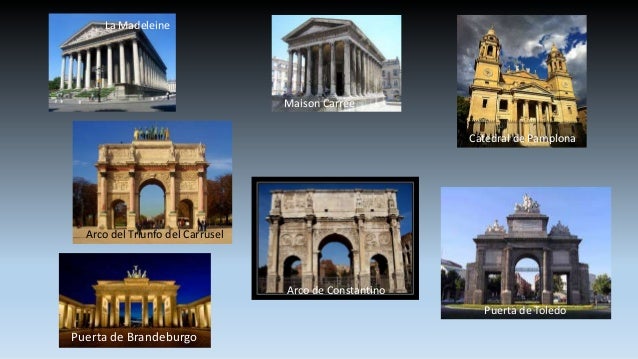
  ![Stargate Special Edition [Reino Unido] [DVD]: Amazon.es: Kurt Russell: Películas y TV](https://m.media-amazon.com/images/I/51Gr2lgt03L.jpg)
LA SANGRE DEL CORDERO EN EL DINTEL, EN CONTEXTO AL EXODO PASCUAL, ES UN TIPO DEL GRIAL
1. Éxodo 12:7: Y tomarán de la sangre, y la pondrán en los dos postes y en el DINTEL de las casas en que lo han de comer.
2. Éxodo 12:22: Y tomad un manojo de hisopo, y mojadlo en la sangre que estará en un lebrillo, y untad el DINTEL y los dos postes con la sangre que estará en el lebrillo; y ninguno de vosotros salga de las puertas de su casa hasta la mañana.
3. Éxodo 12:23: Porque Jehová pasará hiriendo a los egipcios; y cuando vea la sangre en el DINTEL y en los dos postes, pasará Jehová aquella puerta, y no dejará entrar al heridor en vuestras casas para herir.
Dintel
De Wikipedia, la enciclopedia libre

Esquema de estructura adintelada.
Un dintel es un elemento estructural horizontal que salva un espacio libre entre dos apoyos. Es el elemento superior que permite abrir huecos en los muros para conformar puertas, ventanas o pórticos. Por extensión, el tipo de arquitectura, o construcción, que utiliza el uso de dinteles para cubrir los espacios en los edificios se llama arquitectura adintelada, o construcción adintelada. La que utiliza arcos o bóvedas se denomina arquitectura abovedada.
Los mejores exponentes de arquitectura adintelada en piedra son los edificios monumentales del Antiguo Egipto y la Grecia clásica. La palabra dintel proviene de la palabra latina: limitellus, que deriva etimológicamente de limen y limes. En latín la palabra limen significa umbral, puerta, entrada o comienzo, y limes se refiere a un sendero entre dos campos, límite o muralla.

Comparen las dos figuras anteriores y noten que la LUZ SOLAR PENETRA, en este caso EN LA PUERTA DE TIWANAKU (BOLIVIA) en los equinoccios, osea el 20/21 de marzo y los 21/22 de septiembre. CONCRETAMENTE LA FIESTA DE LOS TABERNACULOS ES PRIMA HERMANA DE LA FIESTA PASCUAL. EN ESTE MARCO, INSISTO, EL SOL, SI USTED COMPARA CON LA FIGURA SUPERIOR, EN LOS MISMOS EQUINOCCIOS LA LUZ SOLAR CHOCA CON LA PIRAMIDE VATICANA E INCLUSO INGRESA O PENETRA ADENTRO DEL TEMPLO DE SAN PEDRO. PREGUNTO: ¿SI LA PLAZA DE MARIA DE LA VICTORIA ESTA UBICADA EN LA MISMA LINEA EQUINOCCIAL, QUIEN ES EN ESTE MARCO LA MISMA, EN EL CONTEXTO QUE LA PASCUA TAMBIEN TIENE ESA REFERENCIA? CUALQUIER PERSONA QUE TIENE TRES DEDOS DE FRENTE SE DA CUENTA QUE ES MARIA LA MAGDALENA. SI NO ES ASI PREGUNTO:
¿PORQUE CRISTO SE PRESENTO SIENDO VENCEDOR EL 17 DE NISSAN, OSEA EN EL EQUINOCCIO FRENTE A MARIA MAGDALENA?
CONCLUYO:
MARIA LA VICTORIA ES MARIA MAGDALENA
 |
|
|
|
|
Dog Days Prophecy
Sirius, Regulus, Super Bowl, financial crises, earthquakes & August 2015 Lucifer time codes
By Goro
August 02, 2015
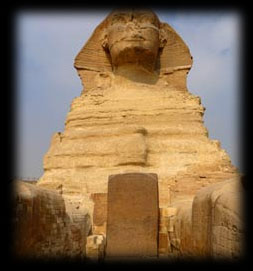
[Great Sphinx aka "Father of Terror"]
[NOTE: Yes, the global stock market chaos of August 2015 was predicted with precision in this article (posted on Aug 2, 2015) as you'll see below or in the new article When Prediction Comes True.... If you're new here, this is not a fluke as this is what I do on my websites (Etemenanki & STRUG). You may find the approach baffling, but you can't argue with this kind of unambiguous results. Key parts of this information was originally posted all the way back in February on STRUG (members only).]
Terror was the opening music for the year 2015, potentially foreshadowing what may transpire in August...

Our job here is to discern and decode a set of "time codes" lurking just below the surface of reality which in this case is celestially anchored by two stars: Sirius and Regulus.
Sirius is the star of Isis per ancient Egyptian tradition, and Paris ("Par-Isis") is semi-officially a city of Isis-Sirius where we find the Historical Axis (including the world-famous Champs Elysees boulevard) oriented toward the daily rising of Sirius.
The same axis happens to align with the sunset on August 6–8...
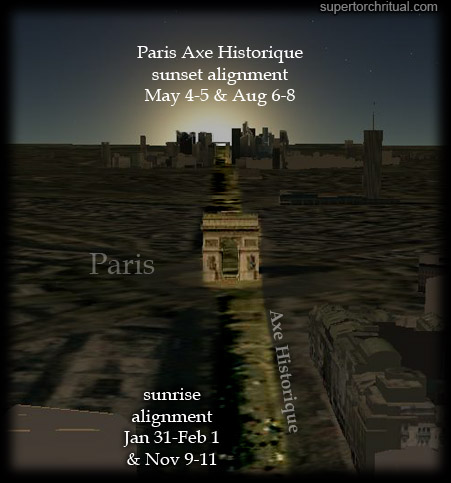
…as well as May 4–5 which this year gave us highly meaningful events already:


The Historical Axis also aligns with sunrise around February 1 (& Nov 9–11). This one coincided with the Super Bowl where Katy Perry did her halftime show in Phoenix this year.

On STRUG ("Super Torch Ritual Underground" members/underground area) I noted back in February that University of Phoenix Stadium (Super Bowl 2015) has some serious Sirius alignments...


...plus the fact that at the latitude of Phoenix (~33.45 N) the heliacal rising of Sirius takes place around August 7th, precisely coinciding with the Paris axis-sunset alignment day.

(The heliacal rising of Sirius is the "rebirth" of the star at dawn right before sunrise after a prolonged period of invisibility in the glare of the Sun; in ancient Egypt this was of great importance as it was for a period of time a signal for the life-giving annual flooding of the Nile, and also due to the general importance of the star and the goddess it represents, Isis.)
https://www.goroadachi.com/etemenanki/dogdays_prophecy.html |
|
|
 Primer Primer
 Anterior
123 a 137 de 137
Siguiente Anterior
123 a 137 de 137
Siguiente
 Último
Último

|
|
| |
|
|
©2025 - Gabitos - Todos los derechos reservados | |
|
|


















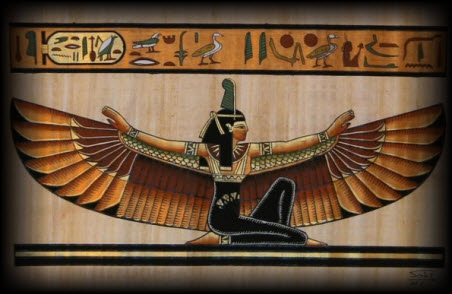






















 Aug 23/24, 2016
Aug 23/24, 2016 




















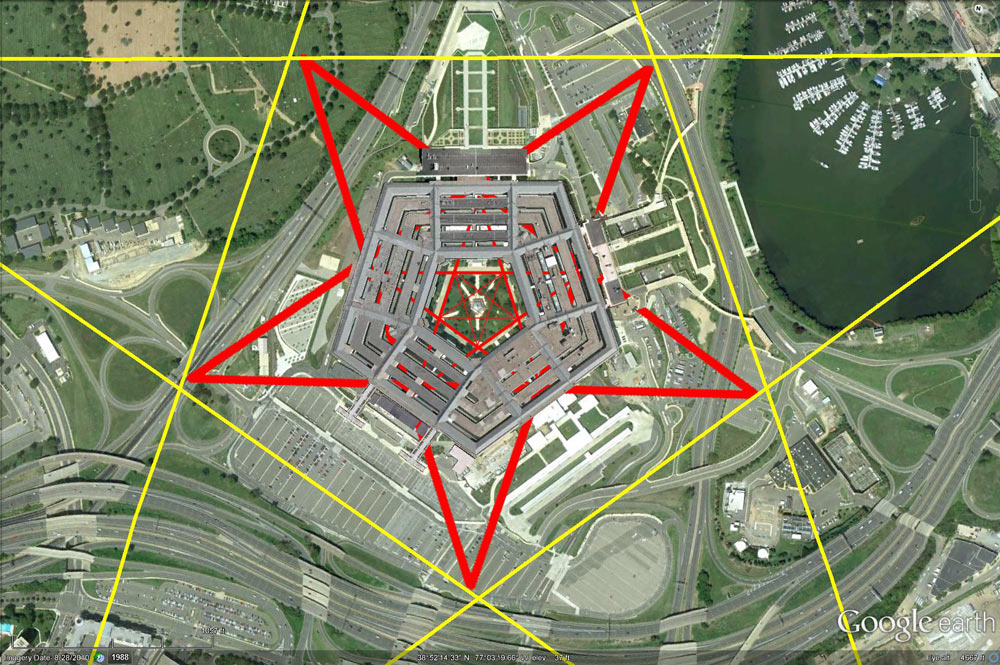
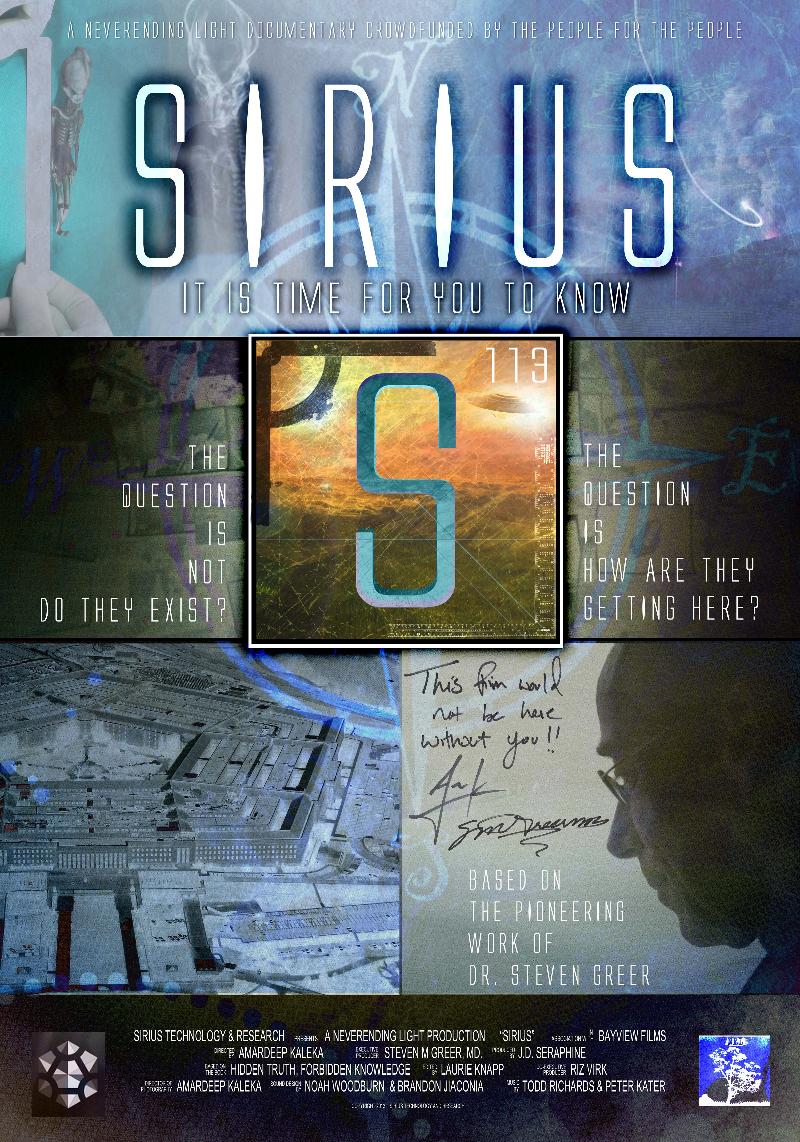


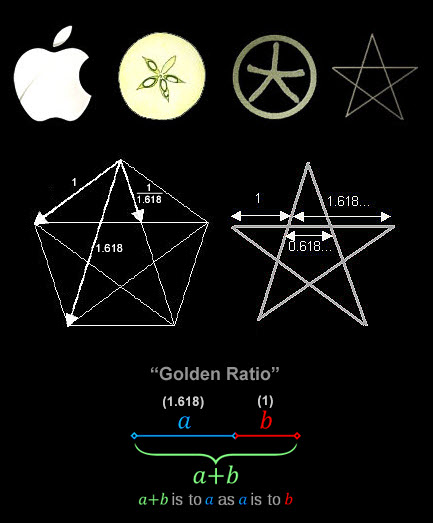
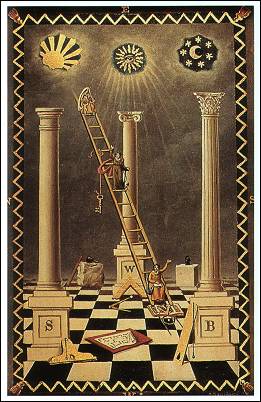









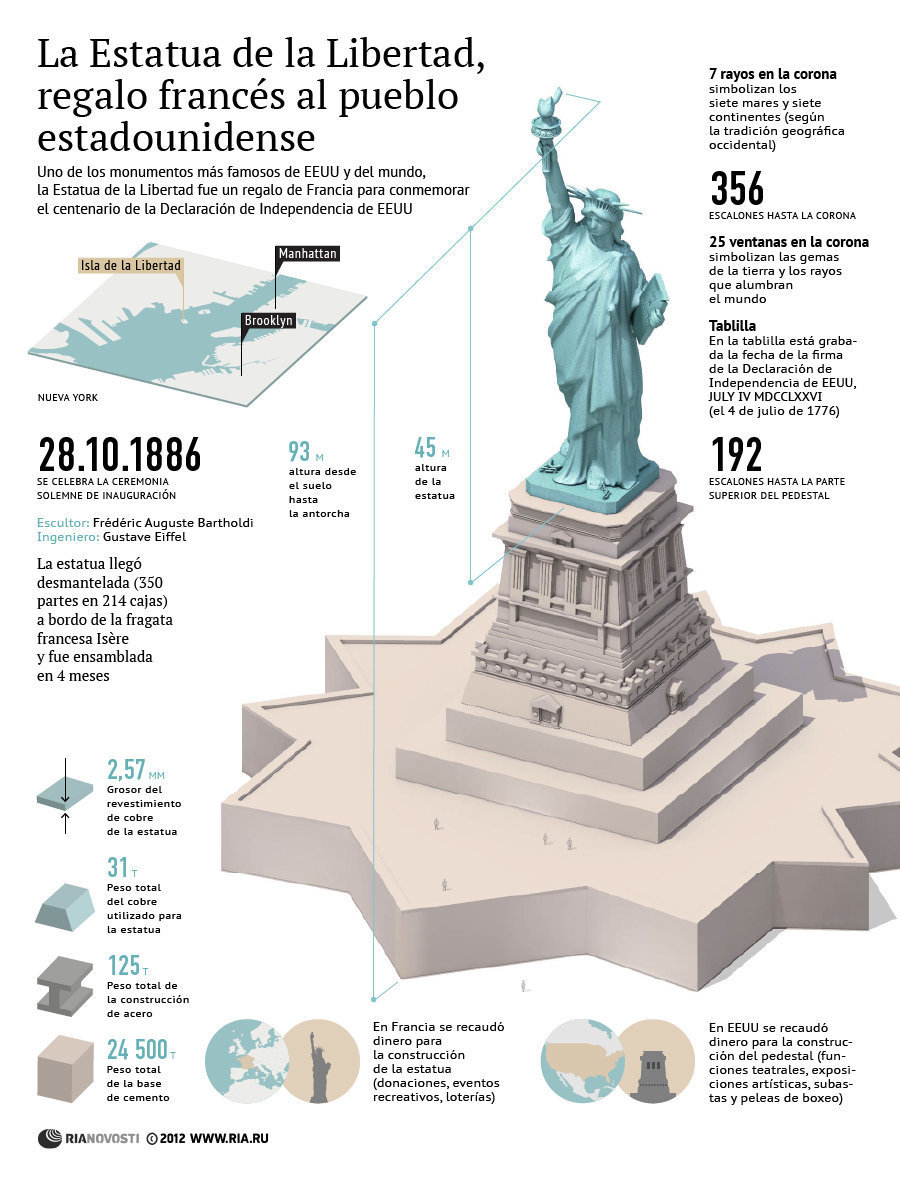


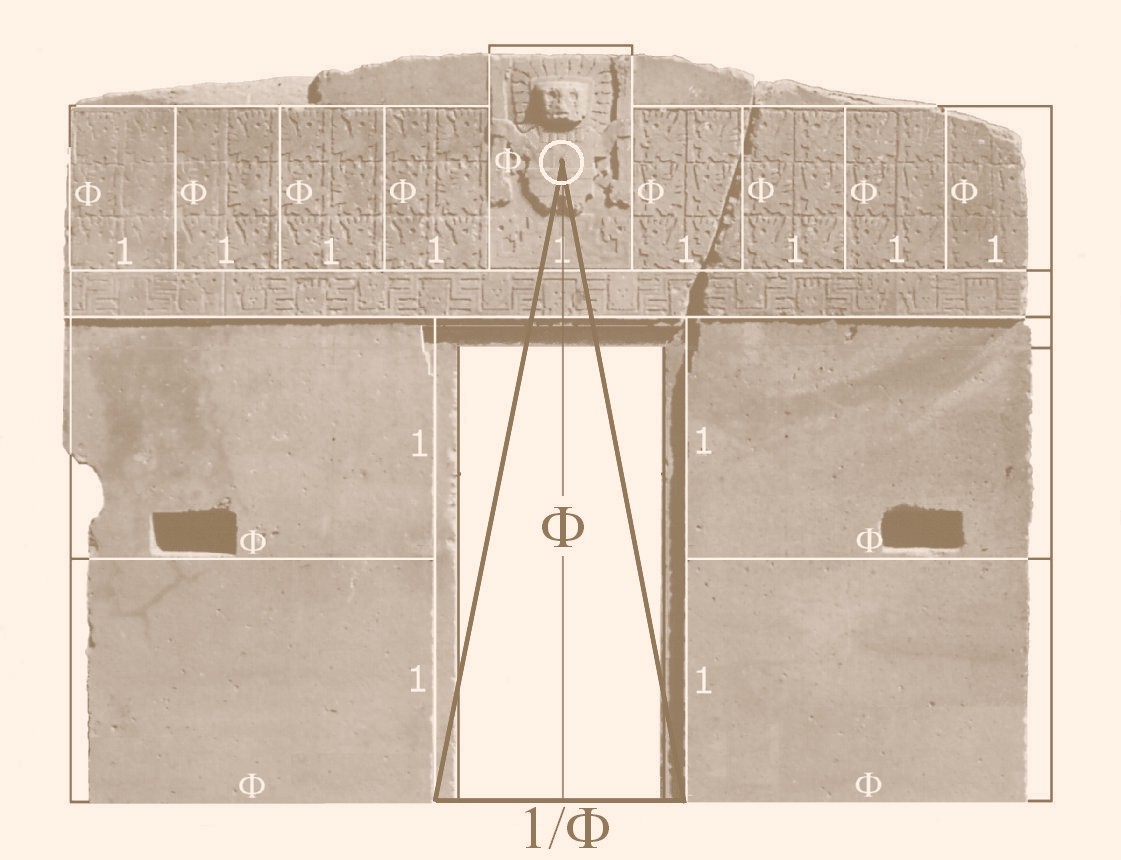



![Stargate Special Edition [Reino Unido] [DVD]: Amazon.es: Kurt Russell: Películas y TV](https://m.media-amazon.com/images/I/51Gr2lgt03L.jpg)
